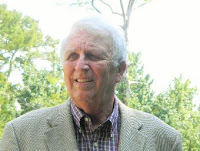By Doyne
Phillips, Managing Editor for Southern
Writers Magazine
There is no
questioning Americans love of animals. Our love is expressed in so many ways. It
is expressed in the love of our pets, the numerous save the animal funds,
protective laws, amazing zoos and even our petting zoos are just a few of these
expressions. Now there is a big push for the next
great step in showing our love and that is Rewilding.
Rewilding is simply returning animals into wilderness areas.
Wilderness areas that were possibly at one time a natural habitat of the
species. From this we have seen bald eagles, peregrine falcons and California
condors returning from near extinction. In Yellowstone National Park the return
of gray wolves and red wolves; regulating deer herds in North Carolina. Grizzly
bears are again on the slopes of the Rocky Mountains, Mexican Jaguars in
Arizona’s Sky Islands and cougars back in the Badlands and Black Hills of the
Dakotas. Not to be left out are the wild salmon returning to old familiar
running waters after dams are removed. But as with most conservation movements
there are pros and cons.
The advocates and opponents, both experts in the field have
their opinions. The advocates say working with our neighbors, both human and wild;
we can restore our great natural heritage. The opponents say it will disrupt
the natural evolution that has occurred where a particular predator has not
been part of the natural scheme for a while and is returned. The devastation it
brings has in the past caused the greatest predator of all, man, to either
fight the conservation policy or kill the predator.
I saw the concern of the opponents in the 1960’s and 1970’s
in Arkansas when it was overrun with beaver. They dammed up streams causing
flooding of thousands of acres of farmlands. Lack of production on these
flooded acres cost the farmer income and the state tax money. The answer was to
bring in alligators to naturally regulate the beaver. Hunters killed the newly
introduced predators for sport, out of fear or just the novelty of it. The
beaver population continued to grow.
As writers and animal lovers we can and many of us have used
this love and fascination of animals to draw our readers in. Walt Disney’s success is based on
animal characters. Who doesn’t love Mickey
Mouse? Disney has a huge following and it is based on our emotional
connection with the animal characters. Our emotions with the characters are
driven with human like relationships. We love, we laugh, we cry and we are
happy for these characters.
Rewilding could be written about either for its success or its
failure. Success could show the natural re-blending of the species brought
about, a hoped for result. Larger Bison herds, more condors and bald eagles
would be an example. An example of a failure would be the introduction of a
predator and something goes terribly wrong for mankind and animal alike.
With pet ownership in the US nearing 80 million plus, there
are a lot of animal loving readers out there to connect with. As writers we
must decide on our approach. The approach
of lovable characters, the fearful approach of predators gone terribly wrong,
the hero or the villain are all good ones if our readers connect.
With some of our greatest stories being that of animals we
all know there are opportunities for your animal story to be shared with the
world. Use your love of animals to write that short story, novel, poem or play.































